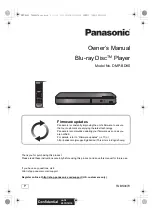
6
The UNI-Protractor system features a wide
selection of templates and each of these UNI-
templates does offer an unique tonearm
alignment.
Some templates are individualized for a given
tonearm with specific geometry and are either
following manufacturer’s specifications or - if I
found the manufacturer’s specifications not
suitable to optimize the tonearms perfromance -
a special calculation by myself.
Then there are “universal alignments” follow-
ing the standard calculations made by Löfgren,
Baerwald and Stevenson for either DIN or IEC
standard.
A brief summary of what to expect from either of
these 3 universal alignments:
- Baerwald / Löfgren A gives a low and equalized
distortion in the three weighted tracking error
peaks. This results in fairly moderate distortion
level and is most suitable for modern records with
a medium long lead-out groove.
- Löfgren B gives considerably lower distortions
in a wide area of the groove compared to Löfgren
A / Baerwald. It does so however to the expense
of very high distortion figures towards the inner
Choosing the right geometry
for a given tonearm
groove. This can result - especially in records cut
close to the inner label - in high distortion figures
towards the end of the records. This alignment is
best suited for modern records which are not cut
close to the inner label. The longer the lead-out
groove - the better (i.e. longest area with lowest
tracking error) Löfgren B works on that particular
record.
- Stevenson tries to optimize - in contradiction to
the former two alignments - tonearm performance
in the most inner part of the groove. Thus one
has very little to zero tracking error towards the
inner label. Resulting in very smooth and lowest
possible distortion sonic performance in the most
critical passages towards the end of a record. This
of the expense of comparatively higher distortions
over most of the groove.
To illustrate the point, you see two examples here
- one a Mercury SR-90310 “Balalaika Favourites”
in the original RFR-1 pressing from 1963 (left
picture) and the very same recording pressed 20
years later in the “Golden Imports” reissue (right
picture) made in the mid-eighties.
Please note, how the original is cut so close to the
paper label, that it even exceeds the DIN cutting
standard. While the later reissue features a groove
which stops 2 inches earlier !!







































